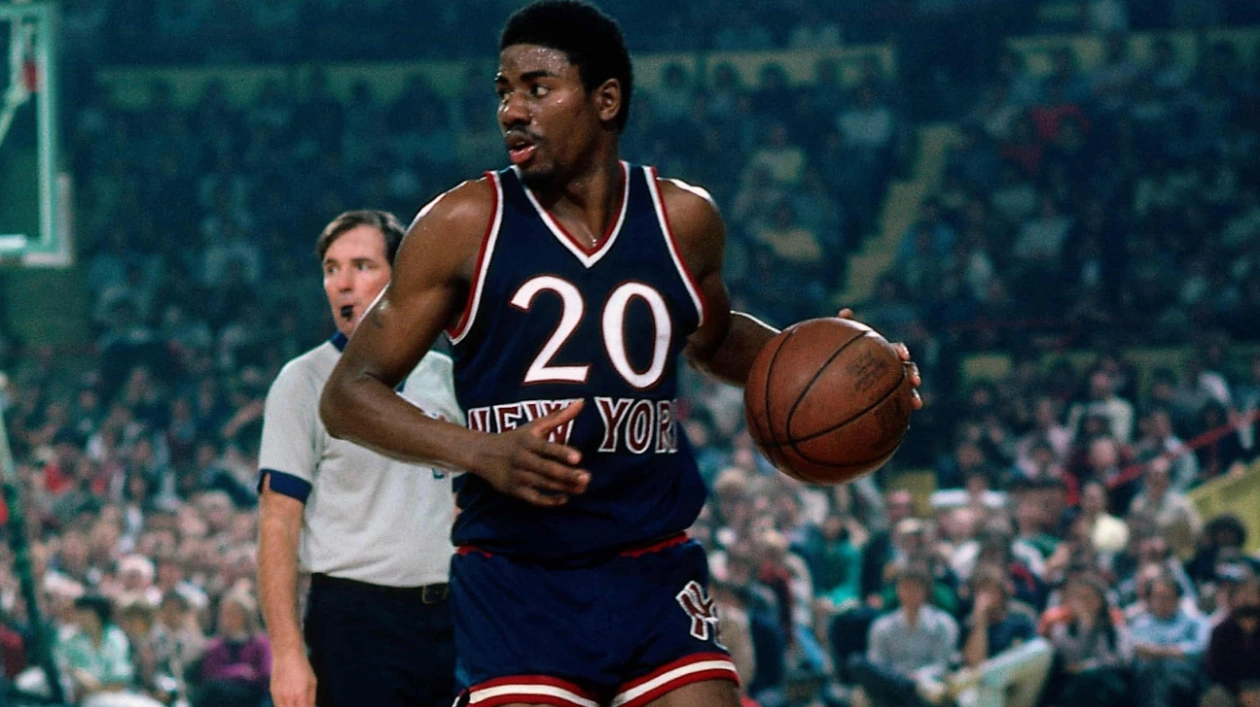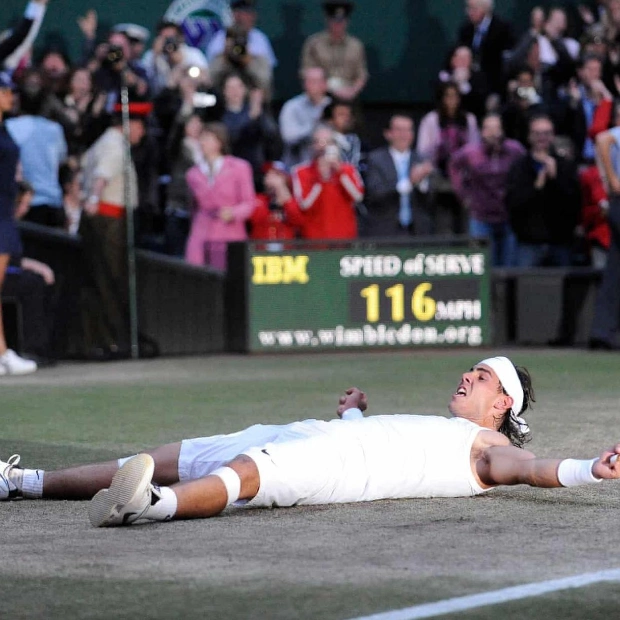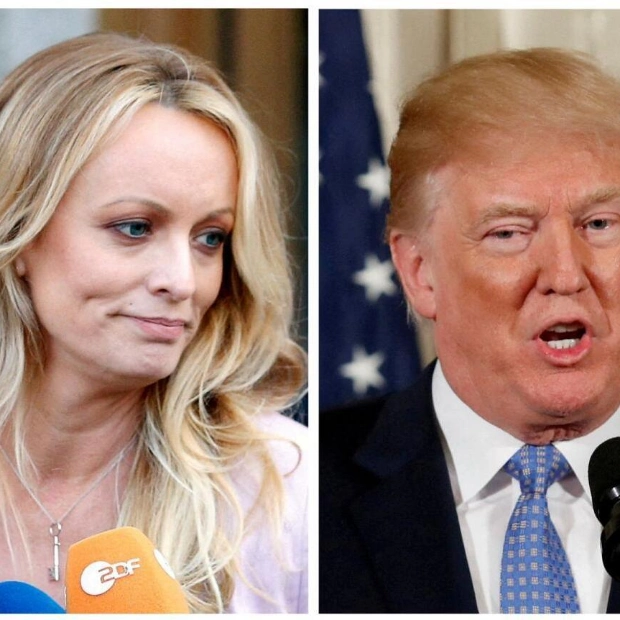Micheal Ray Richardson was a remarkable basketball player, earning the title of a four-time NBA All-Star guard. However, he also holds the unfortunate distinction of being the first player to be banned for life by the league due to drug use, a problem that was more prevalent during his playing days. In the 1980s, substances like cocaine were not only prevalent in professional sports but also in society and entertainment, making discussions about drugs a common occurrence during what is often referred to as the NBA’s cocaine era. “During warmups,” Richardson recalls, “players from opposing teams would exchange offers like, ‘Yo, I’ve got what you need. Let’s meet up after the game.’ That’s how it all started.” At the time, drugs were “everywhere – it was like a trend,” says Richardson, who is also known by the nickname Sugar. However, this widespread drug use alienated many fans, prompting the NBA to implement a three-strike system, leading to Richardson’s ban in 1986 (a topic he covers in his upcoming memoir, Banned).
Today, the NBA, aside from the 10ft basket and the five-on-five competition, looks vastly different from the league in the late 1970s and early 1980s. However, the shift in drug policies took time. For Richardson, who grew up in modest circumstances in the Midwest and only turned to drugs after succumbing to peer pressure while living in New York City and playing for the Knicks, drugs were not part of his early life. Yet, they eventually consumed him, leading to a debilitating addiction that lasted for years. Unfortunately, his story is not unique. When David Stern became NBA commissioner in 1984, one of his top priorities, alongside promoting the Magic Johnson-Larry Bird rivalry, was to clean up the game, which involved issuing suspensions and lifetime bans (Richardson was also the first player to be reinstated to the NBA in 1988, though he never returned to the league).
During those days, professional basketball was rife with addiction and lost potential. Marvin “Bad News” Barnes is often cited as the epitome of drug issues in the sport. His biography, Bad News, chronicles a life marred by drug abuse, including associations with drug kingpins, which derailed what could have been a Hall of Fame career. From averaging 24.1 points and 10.8 rebounds per game in the ABA in 1975-76, his performance plummeted to 9.6 and 4.8 a season later in the NBA. Barnes was out of professional basketball by 1980 and, despite multiple attempts, never managed to kick his habit before passing away in 2014. However, Barnes is not an isolated case. In 1986, the same year Richardson was banned for life, Boston Celtics rookie Len Bias died from a drug overdose at the age of 22, just hours after being drafted. “He got hold of some bad stuff,” Richardson says. “That was a tragic moment. A wakeup call for everyone.”
Also in 1986, All-Star John Drew was banned for life for violating the league’s substance abuse policy. That same year, Rockets guard John Lucas was waived by the team due to his severe drug issues. (Lucas later turned his life around, became an NBA coach, founded a rehabilitation center, which has helped save the lives of many athletes, and even headed up a professional tennis team featuring Steffi Graf.) In 1987, All-Star “Fast” Eddie Johnson was banned for drugs. Chris Washburn, a former No 3 pick, was banned in 1989. In 1991, former Sixth Man of the Year, Roy Tarpley, and promising rookie Richard Dumas were both dismissed. The list goes on. But it wasn’t just players. Coaches and executives were also affected by substance abuse, often in the form of alcohol.
“When I was in the [Continental Basketball Association],” says Richardson, “my coach Bill Musselman – he used to hit the bar hard after games and would be red as a beet. He would be so damn drunk. But there were many coaches who drank heavily. Back then, it was more accepted.” In the NBA, drug abuse was so rampant in the 1980s (even Michael Jordan has spoken about it) that teams reportedly hired private investigators to spy on their players, from Los Angeles Lakers All-Star Norm Nixon to Richardson when he was with the Golden State Warriors. Richardson believes his lifetime ban, along with Bias’s death and the other suspensions, finally forced players to confront their drug use. They knew real consequences were imminent, and the league was demanding better behavior.
Still, the NBA, like all walks of life, has since had to deal with other examples, from alcohol abuse to prescription drug dependence. Other leagues like the NFL and MLB have also faced serious drug issues, from opioids to painkillers to steroids to cannabis use, which is legal in many US states now and which the NBA stopped testing for in 2021 (a fact that irks Richardson, who has been drug-free for decades). And all sports are facing problems with gambling and gambling addictions. When it comes to the NBA, Richardson says, there were issues with heroin (Kareem Abdul-Jabbar even admitted to trying it once) and then crack. The only remedy was distance. “You’ve got to keep yourself out of those places,” Richardson says. “Where it won’t give you opportunities to do it. Keep yourself out of those environments.”
Today, the NBA views substance abuse and drug addiction as part of a broader issue, offering its players a comprehensive approach that focuses on mental health. At a time when the US is grappling with fentanyl and opioid epidemics and other debilitating social issues, the NBA is working to educate its workforce about the dangers of drug use and addiction, as well as addressing other issues that can affect one’s mental state. With annual salaries rising to as much as $60m-plus, there is a lot to protect. Indeed, the league has come a long way over the years. From players like DeMar DeRozan, who just wrote a book on his mental health journey, to Hall of Famer Spencer Haywood speaking openly about his issues with substances.
“Even now,” says Richardson, “it’s not like it was back in the 80s when I was [playing]. Because now there’s the fentanyl. Now what they’re doing is mixing all the drugs with fentanyl and it only takes a little – because fentanyl will kill you.” And if fans wish to take a quick glance at a list of recent NBA suspensions, they will not find many of the kind that the league suffered from decades ago. Rather, they will largely see the more garden variety on-court fighting or run-ins with refs (though there are still some recent instances of substance abuse). Two people charged with continuing the improvement of the NBA from a social perspective include Jamila Wideman, a former WNBA player and current senior vice-president of player development in the NBA, and Dr. Kensa Gunter, a psychologist and director of NBA and WNBA mind health. Both, especially compared to Richardson’s era, are doing an excellent job, given the outside factors and demands on players’ lives today, from social media to gambling pressures.
“One thing about alcohol and drugs,” says Richardson, “they do not discriminate.”
Source link: https://www.theguardian.com






